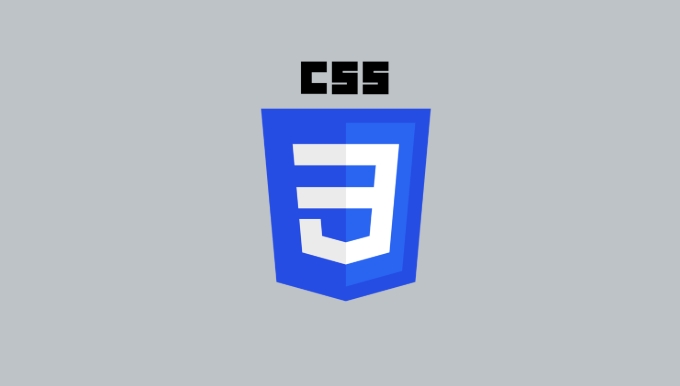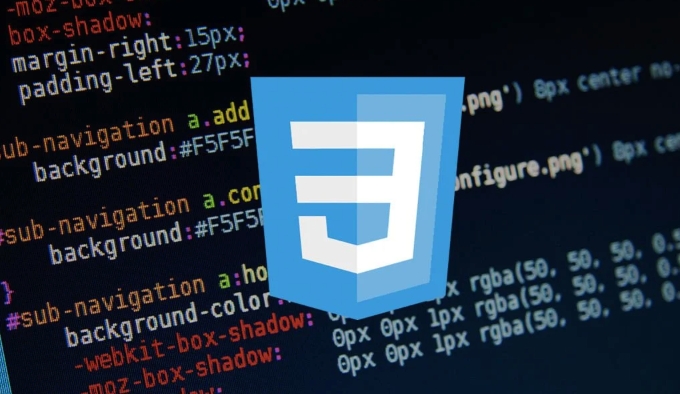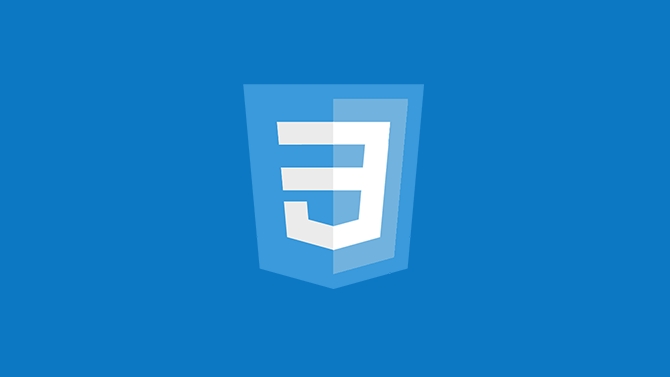The best performance of CSS is usually ID and class selector. 1. ID selectors are the fastest, because their uniqueness makes the browser stop immediately after searching, which is suitable for single-style applications; 2. Class selectors are balanced and reusable, suitable for most style tasks; 3. Avoid excessive nesting or complex selectors (such as pseudo-classes, attribute selectors), because their parsing is slow, especially in large projects. Prioritize the use of simple selectors to improve rendering efficiency and maintain code maintenance.

When it comes to CSS performance, most modern browsers are highly optimized, so the differences between selectors aren't usually a big concern for everyday websites. But if you're working on large-scale projects or aiming for optimal rendering performance, some CSS selectors do perform better than others — mostly because of how browsers process them.

In general, simple selectors like class and ID selectors are the most performant , while complex or deeply nested selectors can introduce unnecessary overhead.

ID Selectors Are Fastest (Mostly because They're Unique)
Browsers treat ID selectors ( #header ) as unique identifiers. Since each ID is supposed to appear only once per page, the browser can optimize by stopping its search after finding the first match.
This makes #some-id extremely fast compared to other selector types.

Best use:
- For one-off styles that need to be applied to a single element.
- Avoid overusing IDs for styling — they're hard to override and not very reusable.
Note: Don't rely on ID selectors just for speed unless you really need them. Performance gains here are negligible in most cases.
Class Selectors Are the Workhorse — Balanced and Reusable
Class selectors ( .btn , .active ) are the go-to choice for most styling tasks. Browsers are also heavily optimized for them, making them nearly as fast as ID selectors.
They offer:
- Reusability across multiple elements
- Good performance
- Easier maintenance and overrides
Tips for performance:
- Use semantic class names that describe purpose, not style (eg,
.nav-linkinstead of.blue-text) - Avoid chaining too many classes together unecessarily (like
.btn.primary.large.success), especially if it's not needed for specificity
Avoid Overly Complex Selectors
Selectors like div ul li a span or section > div:nth-child(2) .highlight may work fine visually, but they take longer for the browser to parse and match.
Why?
- The browser reads selectors from right to left.
- So
div ul li a spanstarts with matching allspanelements, then checks if they're inside ana, which is inside anli, and so on — which can get slow if used excessively.
Examples of what to avoid or minimize:
- Deep nesting like
body div header nav ul li a - Heavy use of pseudo-classes like
:nth-child(n)in large lists - Universal selector (
*) combined with attribute selectors
If you find yourself writing long chains or deep nesting, consider adding a simple class instead.
Attribute and Pseudo-Class Selectors Are Slower but Still Useful
Selectors like [type="text"] , :hover , or input:checked are more expensive because they require additional checks beyond element type or class.
They're not slow enough to break your site , but overuse — especially in large forms or dynamic interfaces — can add up.
Use these when:
- You need to target specific states or attributes (like form validation)
- When JavaScript-driven styles depend on dynamic values
But again, prefer adding a class via JS if you're toggling visual states — it's faster and easier to maintain.
So, the most performant CSS selectors are simple ones like ID and class selectors. More complex selectors have their place, but they come with a small cost in processing time. Unless you're building something huge or performance-critical, this won't make a visible difference — but knowing how selectors work helps write cleaner, more scalable code.
Basically that's it.
The above is the detailed content of Which CSS Selectors are the most performant and why?. For more information, please follow other related articles on the PHP Chinese website!

Hot AI Tools

Undress AI Tool
Undress images for free

Undresser.AI Undress
AI-powered app for creating realistic nude photos

AI Clothes Remover
Online AI tool for removing clothes from photos.

Clothoff.io
AI clothes remover

Video Face Swap
Swap faces in any video effortlessly with our completely free AI face swap tool!

Hot Article

Hot Tools

Notepad++7.3.1
Easy-to-use and free code editor

SublimeText3 Chinese version
Chinese version, very easy to use

Zend Studio 13.0.1
Powerful PHP integrated development environment

Dreamweaver CS6
Visual web development tools

SublimeText3 Mac version
God-level code editing software (SublimeText3)
 CSS tutorial for creating loading spinners and animations
Jul 07, 2025 am 12:07 AM
CSS tutorial for creating loading spinners and animations
Jul 07, 2025 am 12:07 AM
There are three ways to create a CSS loading rotator: 1. Use the basic rotator of borders to achieve simple animation through HTML and CSS; 2. Use a custom rotator of multiple points to achieve the jump effect through different delay times; 3. Add a rotator in the button and switch classes through JavaScript to display the loading status. Each approach emphasizes the importance of design details such as color, size, accessibility and performance optimization to enhance the user experience.
 Addressing CSS Browser Compatibility issues and prefixes
Jul 07, 2025 am 01:44 AM
Addressing CSS Browser Compatibility issues and prefixes
Jul 07, 2025 am 01:44 AM
To deal with CSS browser compatibility and prefix issues, you need to understand the differences in browser support and use vendor prefixes reasonably. 1. Understand common problems such as Flexbox and Grid support, position:sticky invalid, and animation performance is different; 2. Check CanIuse confirmation feature support status; 3. Correctly use -webkit-, -moz-, -ms-, -o- and other manufacturer prefixes; 4. It is recommended to use Autoprefixer to automatically add prefixes; 5. Install PostCSS and configure browserslist to specify the target browser; 6. Automatically handle compatibility during construction; 7. Modernizr detection features can be used for old projects; 8. No need to pursue consistency of all browsers,
 What is the difference between display: inline, display: block, and display: inline-block?
Jul 11, 2025 am 03:25 AM
What is the difference between display: inline, display: block, and display: inline-block?
Jul 11, 2025 am 03:25 AM
Themaindifferencesbetweendisplay:inline,block,andinline-blockinHTML/CSSarelayoutbehavior,spaceusage,andstylingcontrol.1.Inlineelementsflowwithtext,don’tstartonnewlines,ignorewidth/height,andonlyapplyhorizontalpadding/margins—idealforinlinetextstyling
 Creating custom shapes with css clip-path
Jul 09, 2025 am 01:29 AM
Creating custom shapes with css clip-path
Jul 09, 2025 am 01:29 AM
Use the clip-path attribute of CSS to crop elements into custom shapes, such as triangles, circular notches, polygons, etc., without relying on pictures or SVGs. Its advantages include: 1. Supports a variety of basic shapes such as circle, ellipse, polygon, etc.; 2. Responsive adjustment and adaptable to mobile terminals; 3. Easy to animation, and can be combined with hover or JavaScript to achieve dynamic effects; 4. It does not affect the layout flow, and only crops the display area. Common usages are such as circular clip-path:circle (50pxatcenter) and triangle clip-path:polygon (50%0%, 100 0%, 0 0%). Notice
 Styling visited links differently with CSS
Jul 11, 2025 am 03:26 AM
Styling visited links differently with CSS
Jul 11, 2025 am 03:26 AM
Setting the style of links you have visited can improve the user experience, especially in content-intensive websites to help users navigate better. 1. Use CSS's: visited pseudo-class to define the style of the visited link, such as color changes; 2. Note that the browser only allows modification of some attributes due to privacy restrictions; 3. The color selection should be coordinated with the overall style to avoid abruptness; 4. The mobile terminal may not display this effect, and it is recommended to combine it with other visual prompts such as icon auxiliary logos.
 How to create responsive images using CSS?
Jul 15, 2025 am 01:10 AM
How to create responsive images using CSS?
Jul 15, 2025 am 01:10 AM
To create responsive images using CSS, it can be mainly achieved through the following methods: 1. Use max-width:100% and height:auto to allow the image to adapt to the container width while maintaining the proportion; 2. Use HTML's srcset and sizes attributes to intelligently load the image sources adapted to different screens; 3. Use object-fit and object-position to control image cropping and focus display. Together, these methods ensure that the images are presented clearly and beautifully on different devices.
 Demystifying CSS Units: px, em, rem, vw, vh comparisons
Jul 08, 2025 am 02:16 AM
Demystifying CSS Units: px, em, rem, vw, vh comparisons
Jul 08, 2025 am 02:16 AM
The choice of CSS units depends on design requirements and responsive requirements. 1.px is used for fixed size, suitable for precise control but lack of elasticity; 2.em is a relative unit, which is easily caused by the influence of the parent element, while rem is more stable based on the root element and is suitable for global scaling; 3.vw/vh is based on the viewport size, suitable for responsive design, but attention should be paid to the performance under extreme screens; 4. When choosing, it should be determined based on whether responsive adjustments, element hierarchy relationships and viewport dependence. Reasonable use can improve layout flexibility and maintenance.
 What are common CSS browser inconsistencies?
Jul 26, 2025 am 07:04 AM
What are common CSS browser inconsistencies?
Jul 26, 2025 am 07:04 AM
Different browsers have differences in CSS parsing, resulting in inconsistent display effects, mainly including the default style difference, box model calculation method, Flexbox and Grid layout support level, and inconsistent behavior of certain CSS attributes. 1. The default style processing is inconsistent. The solution is to use CSSReset or Normalize.css to unify the initial style; 2. The box model calculation method of the old version of IE is different. It is recommended to use box-sizing:border-box in a unified manner; 3. Flexbox and Grid perform differently in edge cases or in old versions. More tests and use Autoprefixer; 4. Some CSS attribute behaviors are inconsistent. CanIuse must be consulted and downgraded.






